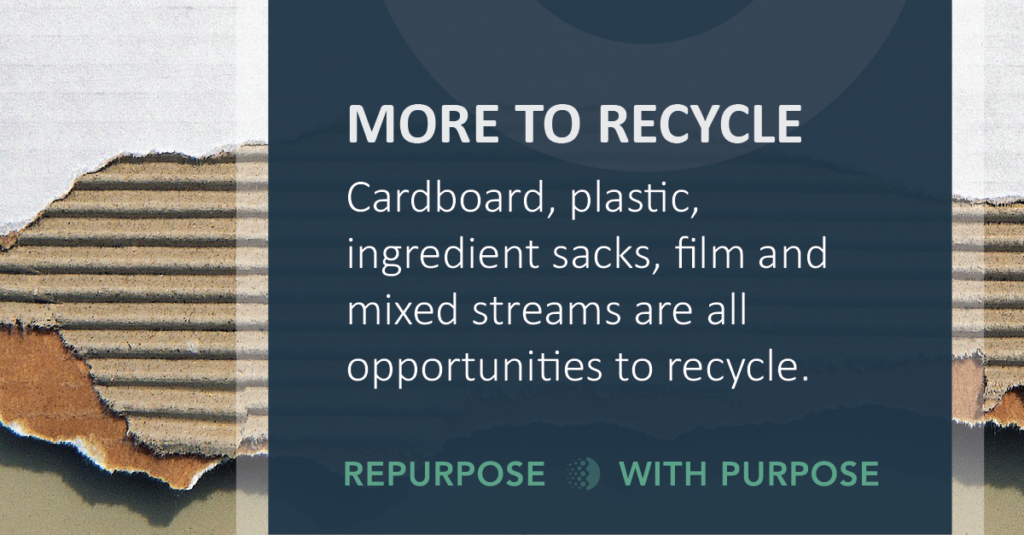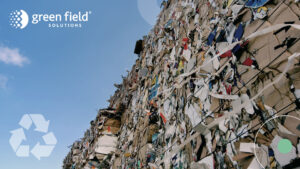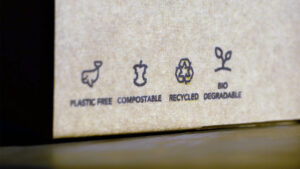A Q&A With Zero Waste Expert Brian Beaudrie
Today’s most sustainable food brands are taking their recycling initiatives up a notch from simply recycling to going zero waste. Reaching absolute landfill independence is no small feat, but absolutely a worthwhile one.
Green Field Solutions works with food manufacturers and other companies to repurpose and recycle a broad range of organic food waste to animal feed (dairy, fats and oils, snacks foods, chocolate) and inorganic materials (cardboard, boxboard, stretch film, super sacks, paper and plastics). We are one of the very few one-stop-shops able to assist companies aspiring to go zero waste.
We asked Brian Beaudrie, GFS Commercial Manager of Recycling and a TRUE Advisor, about the long-term value of recycling, the top performing recyclables in today’s markets and how to bridge the gap between setting sustainability goals and meeting them.
How does long-term value improve recycling?
When we talk about recycling, long-term value creation means we don’t just look at a facility and see what value we can add now, but also what value is possible over time. Sometimes this involves equipment adds, process changes or simplification of recycling programs. Often it’s a combination.
If we can look at a company’s recycling program through a long-term value lens, we can position their programs to be more sustainable both environmentally and financially.
 Which recycled materials are getting the highest return right now?
Which recycled materials are getting the highest return right now?
Shrink wrap has been doing really well. The clear plastic film comes into a facility as packing and shipping. Once recycled, though, it can be used in the construction industry as plastic decking. Cardboard, on the other hand, hasn’t been bringing in as much and can fluctuate a lot. In the last five years, one ton of cardboard fluctuated anywhere from $20 to $200.
When we audit a company’s waste management program, we want to identify as many materials that can be recycled as possible. Having multiple streams of recyclables can balance out a drop in revenue if one, like cardboard, isn’t temporarily doing as well.
Companies that correctly recycle cardboard and plastics generate the highest return. When the market is good, the highest quality bales bring in top dollar. But when there’s a surplus, the mills can be more selective and altogether reject bales that are contaminated or underweight. Good bales reduce the risk of having to stockpile pallets of the material until the market equalizes.
What short-term facility modifications can deliver long-term value?
Long-term value requires a comprehensive look at what and how and where materials originate and where they are going. The right recycling equipment, installed in the right location not only increases throughput but also limits the movement of materials within a facility. Putting the equipment closer to the generation point reduces employee footsteps, operational time and cost.
Case in point, GFS procured a cardboard baler for a mid-sized, dry food ingredient manufacture that helped reduced the amount of cardboard they moved from one side of their warehouse to the other. Another food manufacturer was trashing their ingredient bags in an outdoor compactor. By adding recycling equipment indoors, GFS eliminated wasted employee time and even generated revenue for the rerouted materials. Check out our other case studies.
How can companies set obtainable recycling goals?
Most companies want to be zero waste, which is 95% or better landfill diversion. Sustainability goals could be set by a board of directors or a CEO or maybe their buyers require specific criteria.
When there is a disconnect between setting goals and meeting them, Green Field Solutions shows companies how to operationally get it done. We show them solutions that have worked in similar facilities and new ideas for their current facility.
For example, we’re helping a Midwest food manufacturer get to 90% landfill diversion. Instead of dumping recyclables and food by-products into the trash compactor, which is costing them hundreds of thousands of dollars annually, we developed a process to safely divert certain materials from the compactor that can now be recycled or used for animal feed.
What does it mean to be a USBGC TRUE Advisor?
The TRUE Advisor advantage helps companies meet and get certified in their zero waste goals. The U.S. Green Building Council (USGBC) certification gives credence to the recycling programs that companies have in place. We help companies build their recycling program, then get it certified once it is going.
Learn more about recycling with these articles:

Brian Beaudrie
Brian is a Commercial Manager of Recycling and a TRUE Advisor at Green Field Solutions. He is a zero waste expert with a background in the solid waste and recycling/transportation industry with some of the nation's largest solid waste and recycling companies.





